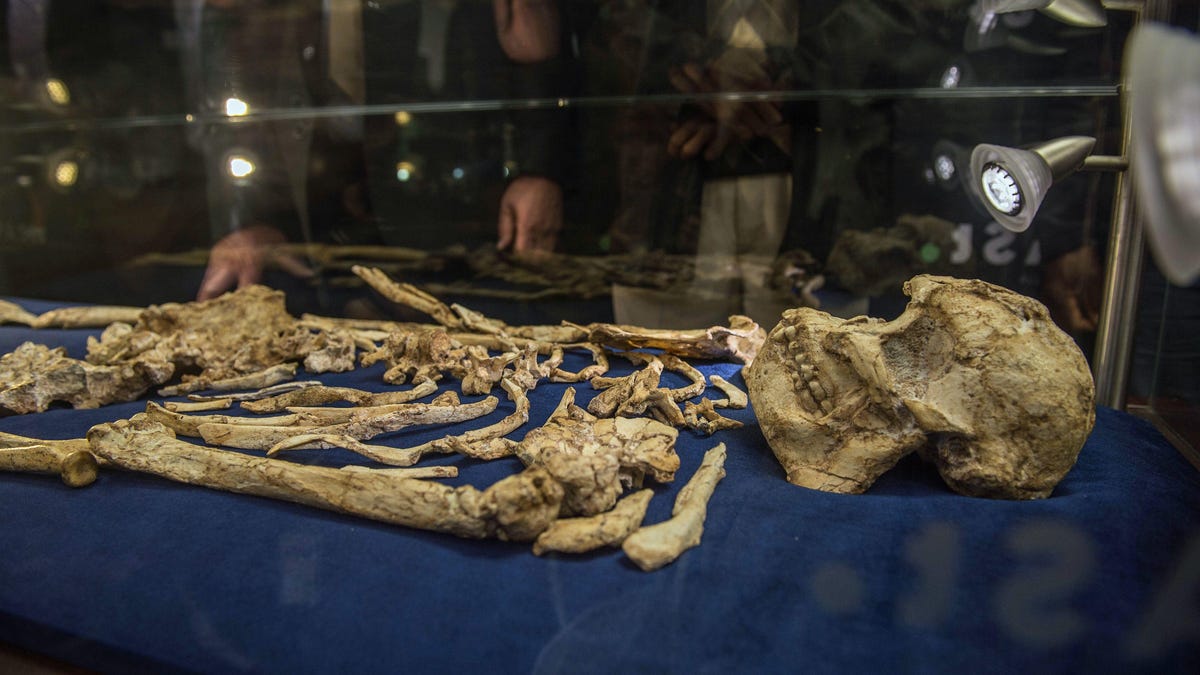Scientists may have discovered a new species of early human
Analysis of "Little Foot", a 3.6 million-year-old skeleton, suggests we may have a new ancient ancestor.

The Little Foot fossilised hominid skeleton is unveiled for the first time to the public at the University of the Witwatersrand in Johannesburg on Dec. 6, 2017.
Meet Little Foot, a skeleton scientists believe could represent a new species of early human, according to New Scientist.
In 1994, in Sterkfontein Cave northwest of Johannesburg, South Africa, paleoanthropologist Ronald Clarke discovered foot bones thought to belong to monkeys. Clarke, of the University of the Witwatersrand, spent the next 20 years carefully excavating 90 percent of a much more remarkable skeleton.
The skeleton, called Little Foot in reference to Bigfoot, was initially found to be the most complete and oldest Australopithecus fossil ever found. (Now extinct, Australopithecus were early humans from 2 million to 4 million years ago.)
Researchers pegged the fossil at 3.67 million years old, and when living, the early human may have been an elderly female about 130 centimeters tall.
With Little Foot being the first fossil of her age to be found with limbs intact, researchers from the University of Liverpool could analyse how she might have walked. Little Foot's legs were found to be longer than her arms, the opposite of the ape-like Ardipithecus species that came before her.
"This hominin had longer lower limbs than upper limbs, like ourselves," said Robin Crompton, a researcher at the university. "That means it was being selected for stride length in bipedalism." Crompton believes that the new analysis suggests that no other known hominin walked like Little Foot did -- and thus, it's a whole new species.
Clarke, too, has long argued that Little Foot does not belong to Australopithecus, nor A. africanus, another human-like primate living in Africa around 2 million years ago. Instead he prefers to classify her as A. prometheus.
A series of papers by Clarke's team have provided extensive data on the fossil and enabled key insights of its structure. These studies suggest Little Foot could be a distinct interim species that developed from a tree climbing hominin to walking on two legs.
"There are many, many differences, not only in the skull but also in the rest of the skeleton," Clarke said, comparing Little Foot to A. africanus.
Those differences include a flatter face, larger teeth and a more omnivorous diet.
Note that the research papers have yet to be peer-reviewed but provide the first scientific look at Little Foot. With this research finally out there, a long running dispute over access to Little Foot has been resolved -- so more researchers will be able to study the fossil.
To read more, the pre-print publications are available here.

